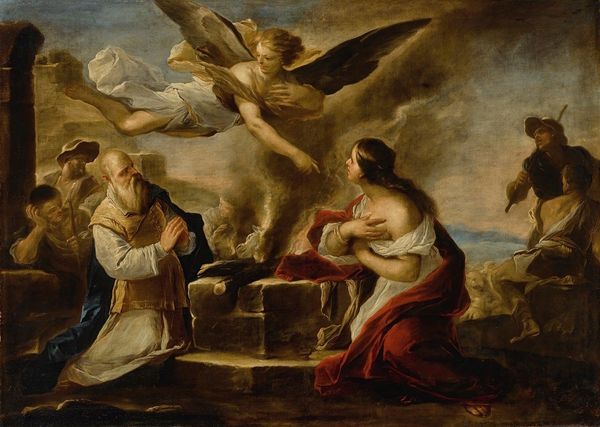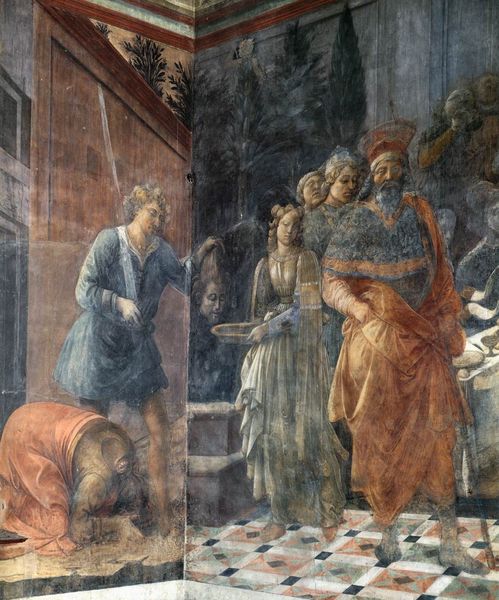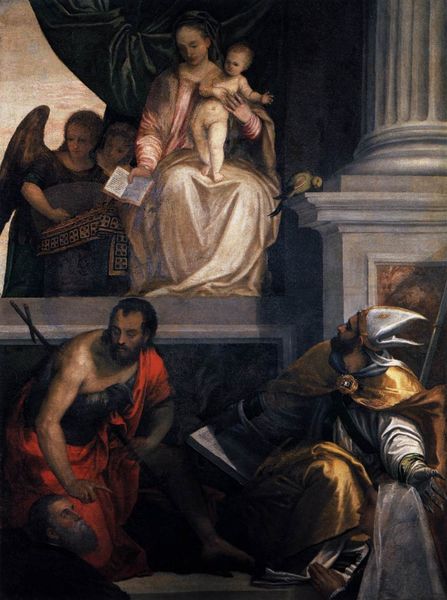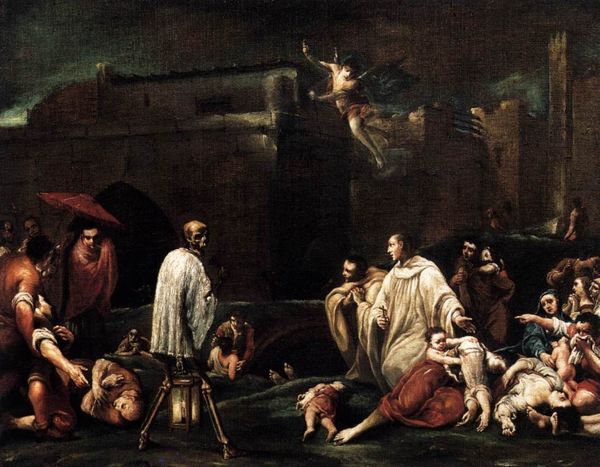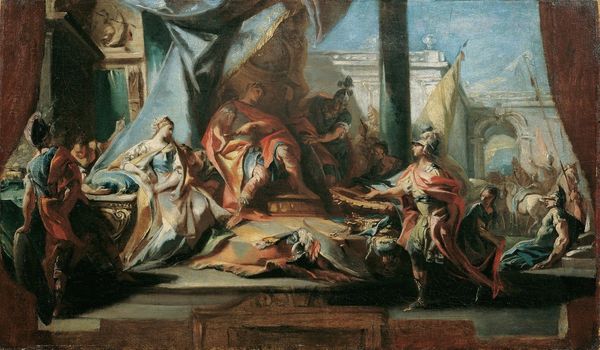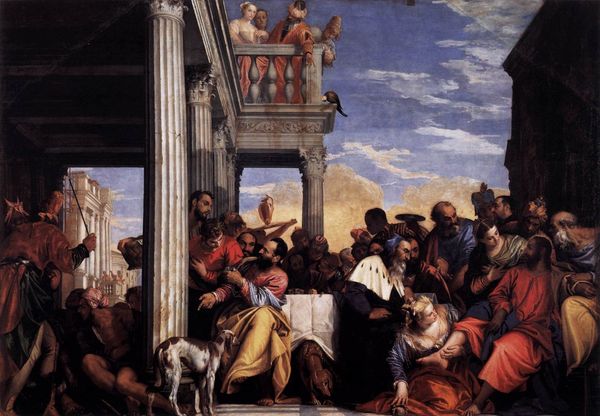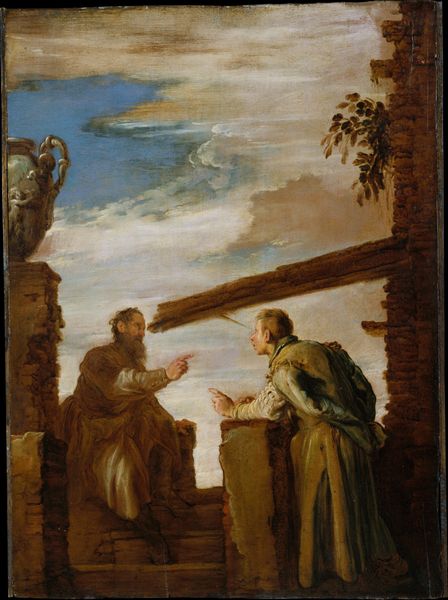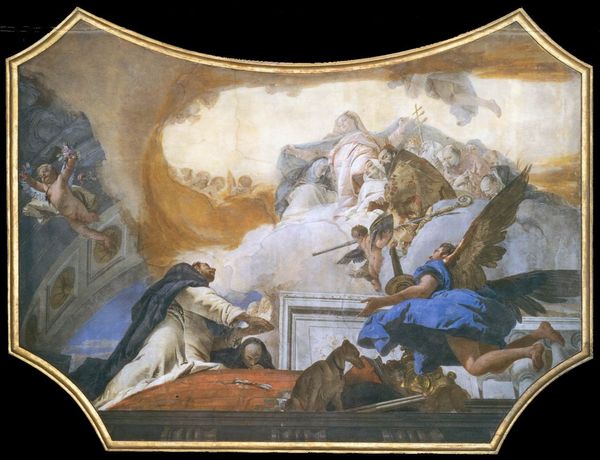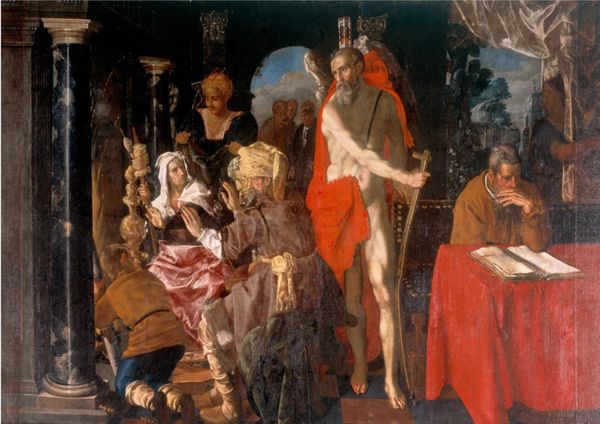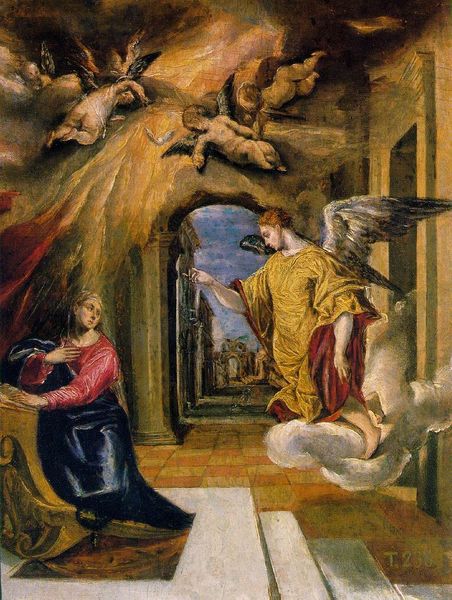
#
acrylic
#
abstract painting
#
painted
#
possibly oil pastel
#
oil painting
#
neo expressionist
#
acrylic on canvas
#
underpainting
#
painting painterly
#
watercolor
Copyright: Public Domain: Artvee
Tintoretto, around the late 16th century, offers us a glimpse into Venetian power, presenting Doge Alvise Mocenigo receiving honors. Note the prominent winged figures rushing in from the left: a motif deeply rooted in classical antiquity, these figures were once associated with victory and divine intervention. We've seen them adorning Roman triumphal arches, symbols of imperial power. Yet, observe how Tintoretto reinterprets this symbol. These are not triumphant gods bestowing glory, but rather a chaotic rush, an almost desperate energy surrounding the Doge, a far cry from their classical predecessors. Consider, too, the gesture of presentation on the right – a venerable bishop bestowing a blessing upon the Doge. This act, laden with religious significance, echoes scenes of investiture and divine right seen throughout Christendom. However, here, the light is dim, the figures strained. Are we witnessing genuine benediction, or a performance of power, a ritual devoid of true spiritual depth? The image lingers, a potent reminder of how symbols persist, evolving with each cultural tremor.
Comments
No comments
Be the first to comment and join the conversation on the ultimate creative platform.
